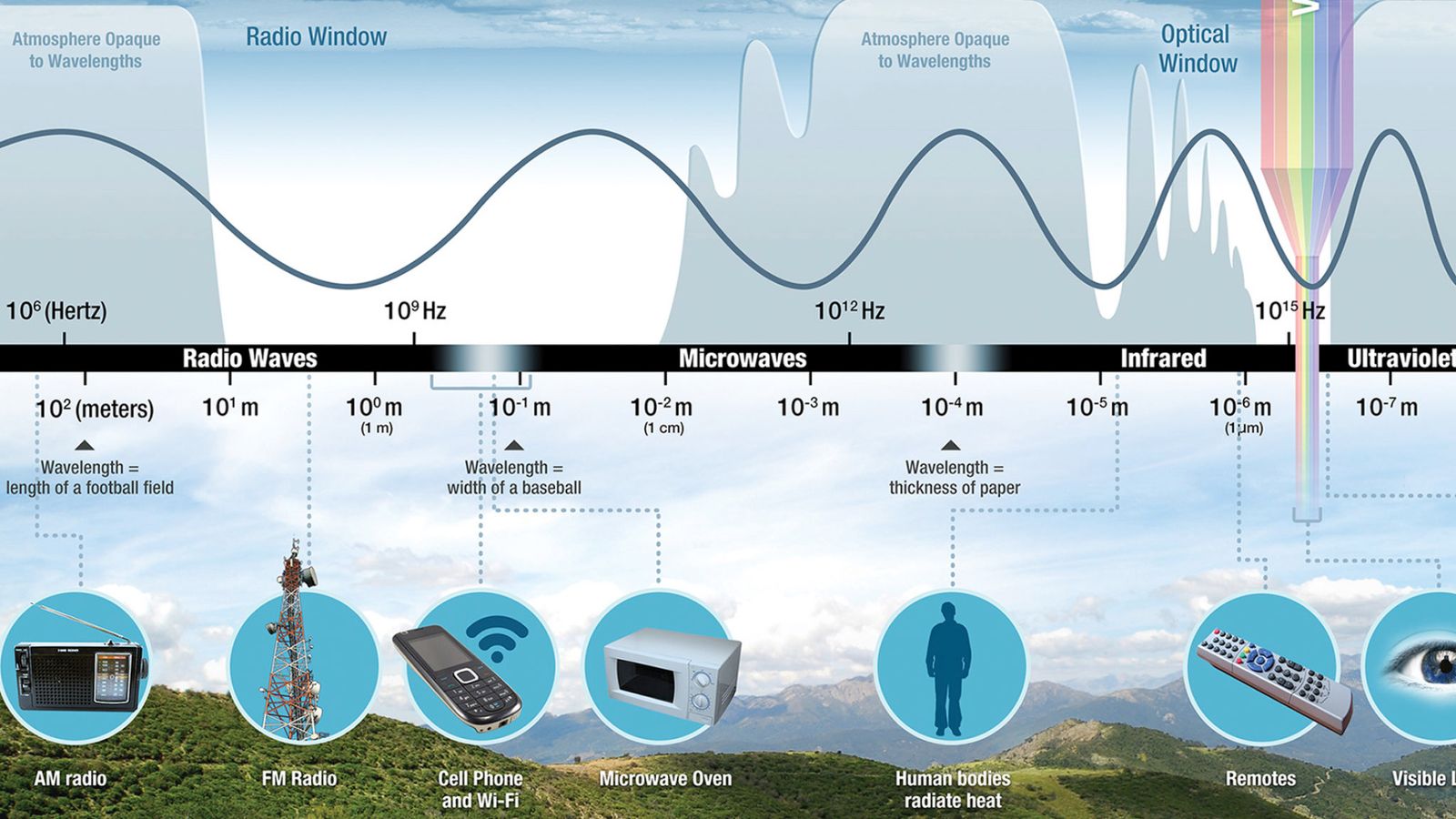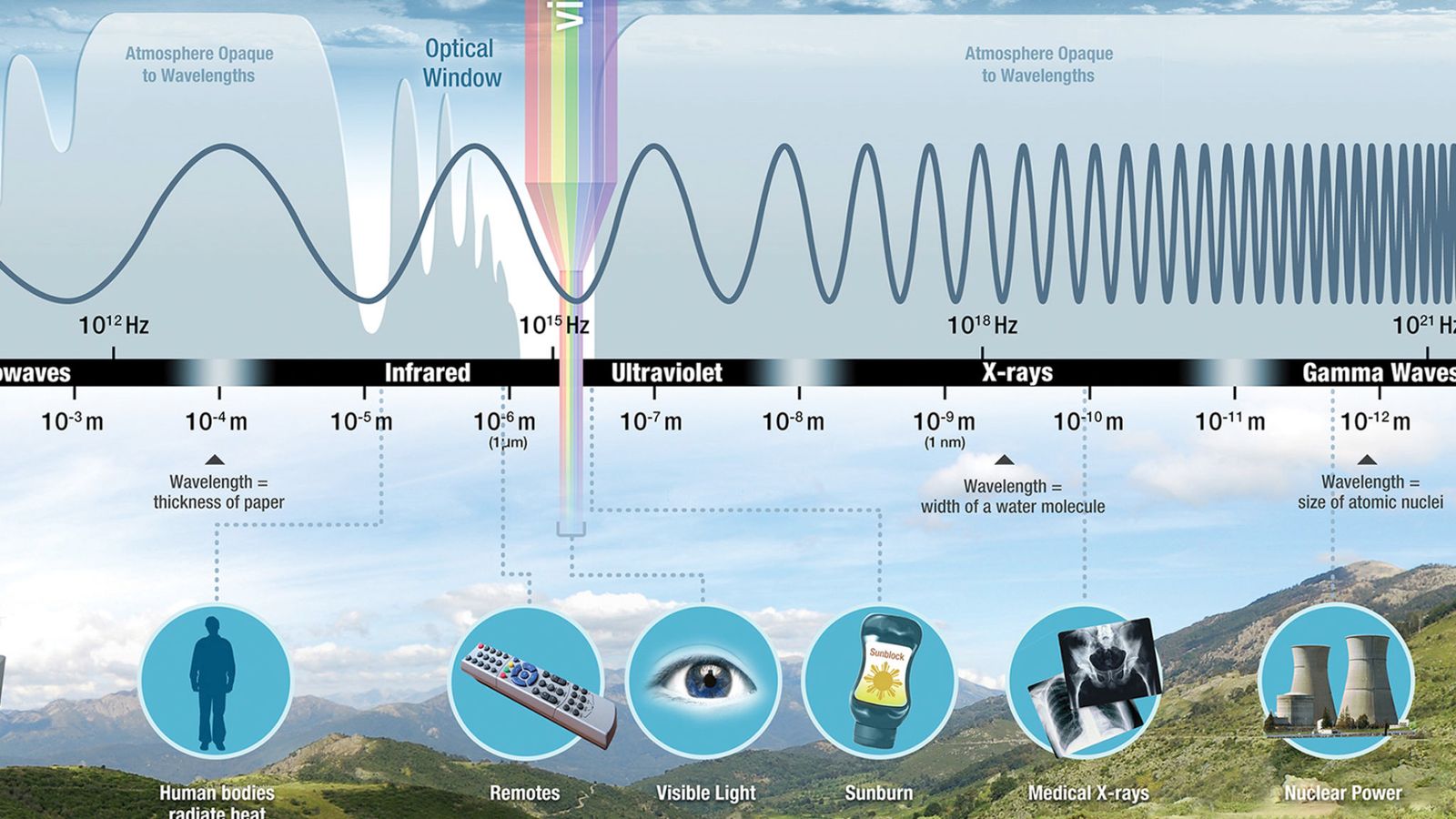One parliamentary petition with more than 29,000 signatures has called for an independent inquiry into the health and safety risks of the next generation of mobile technology.
The government turned down the request, noting there are multiple such enquiries constantly taking place in the UK and internationally to monitor whether electromagnetic radiation is harming people.
Why would 5G cause harm?
To understand whether 5G is dangerous, we really need to have a quick look at what it is and how it works – and to do that we need to understand electromagnetic radiation.
The electromagnetic spectrum is natural. A portion of it will be very familiar to readers in the form of visible light, running from infra-red at the lower frequency end to ultra-violet at the higher end of the visible spectrum.
Electromagnetic radiation is measured in frequency and wavelength. Radiation at lower frequencies and longer wavelengths than visible light is known as the microwave and radiowave part of the spectrum.
This is the section to the left in the graphic above.
Mobile phones communicate with base stations which receive and transmit radio waves in this part of the spectrum.
5G is just a newer part of the spectrum being used – the portion from 22Ghz to 86GHz, which is still way short of the ionising part of the spectrum.
This radiation is known as non-ionising because it is incapable of breaking molecular bonds, knocking off electrons from atoms for instance, and causing the molecule to have an electric charge.
So non-ionising radiation is completely safe?
While non-ionising radiation is weaker than the ionising kind, there are suggestions it is still capable of altering the body.
Claims that it could cause cancer in the ways that ionising radiation is known to are based on a misunderstanding of the science.
The NHS stated there has been an enormous amount of scientific research into the health effects of mobile phone use since the 1990s.
None of this research has supported claims that suggest mobile phone radiation is similar to the more dangerous forms on the right-hand side of the diagram.
So it could be harmful?
Theoretically it could be harmful, yes – but then so could all radiowave radiation over long-term exposures, but that is simply because the studies so far have been inconclusive.
Cancer Research UK notes that despite the ownership of mobile phones increased around 500% between the 1990s and 2016, the incidence of brain tumours only increased by 34% – something which they attribute to better detection and reporting.
It is often noted that the International Agency for Research on Cancer classified mobile phones as a “possible cause of cancer” in 2011, but this followed a series of scientific reports which were not considered conclusive.
It is certain that the non-ionising radiation used in these portions of the electromagnetic spectrum are incapable of directly causing cancer.




